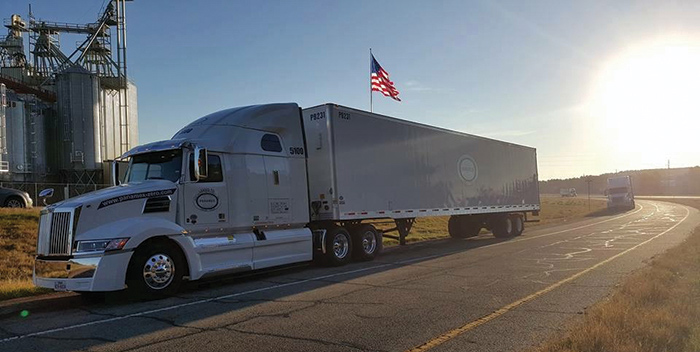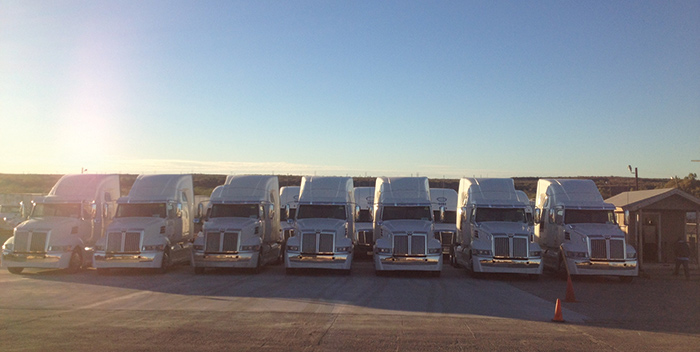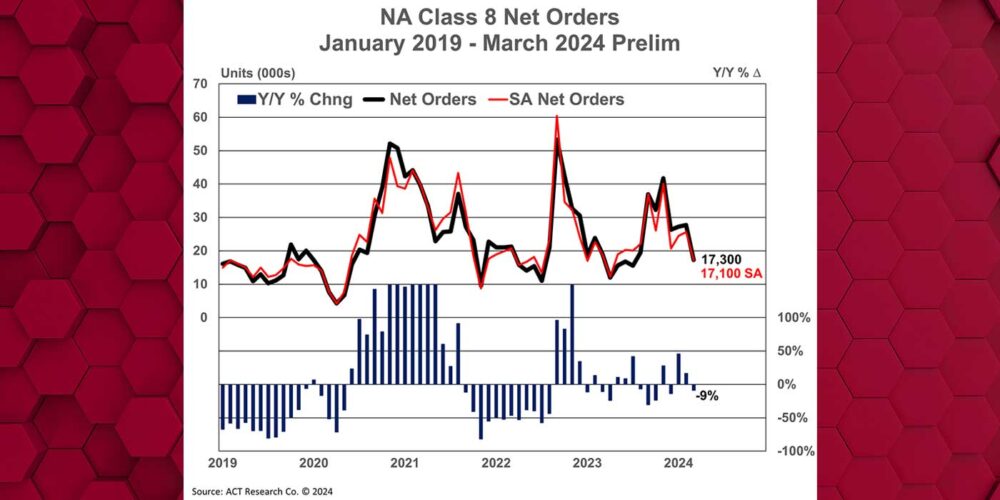While NAFTA, the 1993 trade deal linking the United States, Canada and Mexico, has become a political issue in this election year, politicians and trucking industry observers alike need to look no further than to Pan American Express Inc. (Panamex) to see how cross-border trade can provide jobs and an economic boost. The motor carrier, in fact, is steadily expanding its business, in part through successful partnerships with Mexican trucking companies.
Based in Laredo, Texas, Panamex specializes in providing common and contract truckload and expedited service across North America. The privately held, asset-based carrier and certified minority Hispanic-American business was founded in 1988 and fields a fleet of 180 tractors and 825 trailers.
Early issues for trucking companies that were sending trailers and freight into Mexico have all but disappeared, notes Ric Guardado, chief executive officer at Panamex. “Partnerships based on honesty and trust eliminate many potential issues,” he states. “Our cross-border operations run very smoothly because we work hard to establish relationships with reputable Mexican carriers.
“Our interline agreements assure our shippers in the U.S. that their freight will be handled properly and delivered on time,” Guardado adds. “At the same, shippers in Mexico know they can trust us and our partners.”
Before entering into an interline agreement, Guardado relates, Panamex conducts extensive financial and background checks on potential partners, and makes sure their equipment is compatible.
Panamex also subscribes to the Customs-Trade Partnership Against Terrorism (C-TPAT) voluntary program from U.S. Customs and Border Protection (CBP). Motor carriers with C-TPAT certification are required to perform inspections and to ensure drivers are prepared at the border.
“C-TPAT ensures our customer base and the general public that we are actively focused on the security of the supply chain and on keeping international commerce safe,” Guardado says. “Documenting this process and achieving C-TPAT certification not only reduces risk. It also expedites the processing of cargo at border crossings for our customers.”
Visibility and status
To enable visibility into its operations across North America, relates Sal Verazzi, operations manager at Panamex, the carrier has installed Spireon FleetLocate GPS tracking devices on all company trailers. “That gives us the location and status of every trailer in our fleet at all times,” he says. “By knowing where our trailers are located we are able to enhance our productivity and asset utilization.”
Initially, Panamex tested 50 Spireon systems for 90 days and then made the decision to retrofit existing trailers and have the GPS tracking units installed on new trailers at the factory. “We saw an immediate improvement in customer service and turnaround times,” Verazzi says. “The payback on the GPS system was almost immediate because were are able to cancel a new trailer order, generating almost $1 million in savings by not buying trailers we didn’t need at that time.”
Despite eliminating the capital investment for one year of trailer orders due to location monitoring and more efficient operating practices, the Panamex fleet continues to grow to meet higher demand for the company’s services. In the last year and a half, Verazzi reports, the company’s trailer fleet has expanded from 600 to 825 dry vans.
“We still operate several makes,” Verazzi relates, “but the last 225 trailers we’ve purchased have been Great Dane Champion DX composite plate models. We’ve found that the Great Danes are more durable and less costly to operate, and they provide more cubic capacity.”
Flagship model
New to the Panamex fleet are 20 Western Star 5700XE tractors. “The Western Star has become our flagship model,” Verazzi says. “There is a lot of competition for drivers in our market; so we see this truck as an incentive. It’s spec’d with many of the top-of-the-line amenities that drivers prefer.”
The Western Star tractors already in the Panamex fleet, and the 10 new units that will be delivered this month, are assigned to the company’s best performing drivers. The remainder of the fleet consists of Freightliner Cascadia models.
“Both trucks perform well in our operation, and reliably keep freight moving,” Verazzi states. “Our goals are also to operate efficiently and attract drivers. The Western Stars are an incentive to drivers to strive for the privilege of operating one of those vehicles.”
Panamex also strives for fuel efficiency in its Western Star and Freightliner tractors, including 40 new Cascadias now joining the fleet. The company takes part in the SmartWay certification program by choosing verified tractor models, and Verazzi also notes that Panamex specs low rolling resistance tires and trailer side skirts, and is making plans to add rear trailer aerodynamic devices and to develop a new fuel management program.
Adding ELDs
Also on the agenda at Panamex is to continue implementing electronic logging devices in advance of the ELD mandate that takes effect next year. “We‘re already using the Omnitracs ELD solution in about 40% of the fleet and we expect to have half the fleet on e-logs by the end of the year,” Verazzi says.
“The new hours-of-service regulations have definitely impacted our productivity,” Verazzi continues. “We’re also looking at ways to offset those losses. For example, we’re talking to Omnitracs about a scale bypass system, and we’re working with McLeod Software about implementing a routing solution that will reduce mileage and save time.”
Verazzi also credits the fleet’s service providers for helping eliminate downtime. In particular, he notes that Panamex relies on Doggett Freightliner of South Texas, including its Freightliner of San Antonio and Freightliner and Western Star of Laredo operations, as well as its Great Dane dealer, Border International. The dealerships provide routine service and repairs, and arrange service on the road through their respective networks.
“Whether it’s about operations, equipment or service,” Verazzi says, “we strive to make the most informed decisions possible. We research and benchmark every aspect of our business, and apply what we learn to how it will impact our operation and costs. That way we know we’re making the best choices for us and our customers.”















